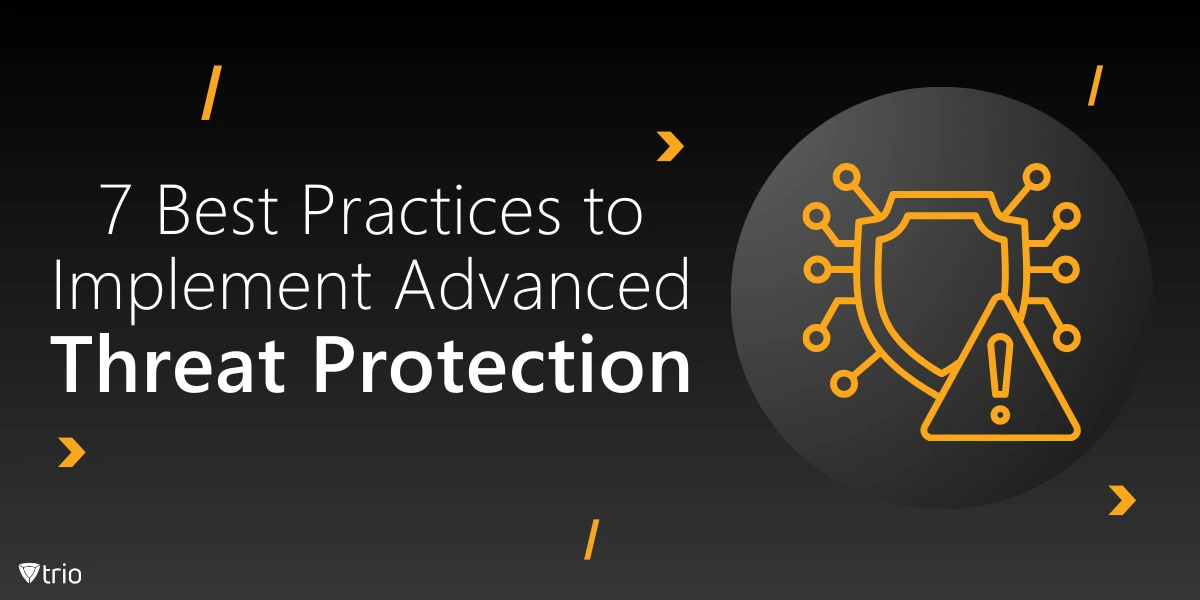In an increasingly interconnected digital environment, the risks posed by Advanced Persistent Threats (APTs) have become a pressing concern for businesses, organizations and individual users alike.
APTs are sophisticated, targeted attacks that seek to infiltrate systems over extended periods, often with the goal of stealing sensitive information or disrupting operations. Unlike more common attacks, APTs are characterized by their stealthiness and persistence, often involving multiple stages and sophisticated techniques to evade detection.
APTs are crafted by cyber criminals to circumvent security measures and inflict maximum damage and disruption.
Given the complexity and evolving nature of these threats, it is clear that no single solution is sufficient to safeguard systems or networks. Instead, a comprehensive, multi-layered security approach is essential, complemented by constant network monitoring. This is where Advanced Threat Protection (ATP) plays a crucial role. ATP solutions use a variety of methods to prevent and block threats before they can execute.
How ATP works
ATP works by using a combination of technologies and techniques to prevent, detect and respond to sophisticated cyber threats, including zero-day exploits, malware, ransomware and targeted attacks. ATP solutions are designed to offer multi-layered security, often going beyond traditional antivirus or firewall defenses.
ATP workflow
This example illustrates a comprehensive ATP workflow encompassing prevention, detection, investigation, response and recovery to effectively mitigate threats.
- Prevention: A user receives an email containing a malicious attachment. The ATP email filter detects that the attachment is suspicious based on machine learning analysis and blocks it.
- Detection: A second-stage attack occurs where an attacker tries to compromise a networked computer using zero-day vulnerability. The ATP system monitors the machine’s behavior and detects an anomaly (such as a privilege escalation attempt).
- Investigation: ATP’s forensic tools trace the attacker’s steps, identifying which system was compromised and what actions were taken.
- Response: The ATP system automatically quarantines the compromised machine, prevents lateral movement, and deploys a patch to close the exploited vulnerability.
- Recovery: The ATP system restores the affected machine to its previous, clean state using backup snapshots, removing the malware and undoing any malicious changes.
ATP Best Practices
To implement ATP effectively, organizations should adopt key best practices that strengthen their security framework and enhance resilience against potential breaches.
Conduct a thorough risk assessment
Before implementing ATP solutions, organizations should conduct a comprehensive risk assessment to identify vulnerabilities within their systems. The assessment should evaluate potential threats, determine the value of assets and analyse the impact of potential security breaches. By understanding the landscape of risk, organizations can tailor their ATP strategies effectively.
Employ a layered security approach
ATP should not rely on a single layer of defense. Instead, organizations should adopt a multi-layered security framework that includes firewalls, intrusion detection systems, antivirus software and endpoint protection. The diversification of protective measures increases the likelihood of detecting and neutralizing threats at different stages of an attack.
Implement continuous monitoring and analytics
Continuous monitoring is essential for identifying threats in real-time. Organizations must employ advanced analytics tools that leverage artificial intelligence and machine learning to analyze data traffic and detect anomalies. This proactive approach enables swift responses to emerging threats and minimizes the potential for damage.
Establish an incident response plan
Having a well-defined incident response plan is crucial for addressing security breaches effectively. Organizations should develop and regularly update this plan, ensuring that all stakeholders know their roles in the event of a security incident. A practiced response can minimize disruption and facilitate a quicker recovery.
Enhance employee training and awareness
Human error remains one of the most significant vulnerabilities in cybersecurity. Organizations should invest in regular training programs to educate employees on recognizing phishing attempts, safe browsing habits and the importance of strong password policies. Empowering employees with knowledge can significantly reduce the likelihood of successful attacks.
Regularly update and patch systems
Keeping software and systems updated with the latest patches is vital in combating threats. Cybercriminals often exploit outdated software vulnerabilities to gain access to networks. Organizations must implement a regular update schedule and employ automated patch management tools to ensure that all systems are secure.
Collaborate with trusted security partners
Finally, organizations should consider collaborating with trusted cybersecurity firms that specialize in ATP solutions. These partnerships can provide access to advanced threat intelligence, ongoing support, and expertise that enhance the organization’s overall security strategy.

APT solution providers
Here, we explore the top APT solution providers recognized for their advanced detection capabilities, valuable threat intelligence and a proven track record.
- Microsoft Defender for Endpoint: Provides comprehensive endpoint protection using behavioral analysis, machine learning, and threat intelligence to detect advanced threats.
- Palo Alto Networks Cortex XDR: Combines endpoint detection and response (EDR) with network traffic analysis and threat intelligence to stop complex attacks.
- Cisco Secure Endpoint (formerly AMP for Endpoints): Provides advanced endpoint protection and response, focusing on blocking advanced malware, fileless attacks, and ransomware.
- FireEye Endpoint Security: Combines signature-based detection, machine learning and behavior analysis to stop advanced threats at the endpoint level.
- CrowdStrike Falcon: A cloud-native endpoint protection platform (EPP) that uses artificial intelligence and machine learning to detect advanced threats.
- Symantec Endpoint Security: Combines traditional antivirus with advanced detection techniques like behavioral analysis, machine learning and exploit protection.
- Sophos Intercept X: Uses deep learning to prevent, detect and respond to advanced threats like ransomware, zero-day attacks and exploits.
- Fortinet FortiEDR: An endpoint detection and response (EDR) tool that focuses on preventing, detecting and mitigating advanced threats in real-time.
- Bitdefender GravityZone Ultra: A next-gen endpoint protection platform that combines machine learning, behaviour analysis and threat intelligence to stop sophisticated attacks.
- Check Point SandBlast: Focuses on preventing advanced threats using sandboxing technology and advanced threat emulation.
When choosing an APT solution, it’s crucial to consider your organization’s size, infrastructure, and specific security needs. Each solution offers a unique combination of detection methods, automated responses, and integration capabilities to help protect against the most sophisticated cyber threats. ATP provides an adaptive and dynamic defense against evolving cyber threats.
Effective Advanced Threat Protection requires careful evaluation of risks, leveraging threat intelligence, implementing multiple layers of security, securing systems, increasing employee awareness on security issues and utilizing automation tools and system monitoring. Adopting these best practices can go a long way in organizations enhancing security guards while safeguarding information and crucial resources from sophisticated cyber hackers.
How Trio Uses Advanced APT Solutions to Safeguard Your Data
Cyber threats are constantly evolving, with new attack vectors appearing almost daily. Effectively keeping pace with changing threats entails continuous vigilance and preparedness for action in the form of appropriate adaptation.
By understanding the different types of threats you’re likely to face, and by implementing one or more comprehensive threat assessment frameworks, you can help safeguard your digital assets against potential damage.
This is where Trio steps in. Its offerings not only assist you in managing all your gadgets but also secure your security environment from all emerging threats. Ready to take your protection to the next level? Learn what Trio can do for your organization. Schedule a free demo today!
Know about news
in your inbox
Our newsletter is the perfect way to stay informed about the latest updates,
features, and news related to our mobile device management software.
Subscribe today to stay in the know and get the most out of your mobile
devices with our MDM solution app.
Recent Posts

Erase the Risk: Protect with Zero Standing Privileges
Learn how zero standing privileges eliminate persistent access rights, enhance data security and reduce the risk of unauthorized access.

Understanding Access Control Types in Cybersecurity w/ Examples
Thorough understanding of access control types & the knowledge to make informed decisions about implementing security measures in your organization.

Cloud Data Protection: Safeguarding Information in the Cloud
Learn essential strategies for robust cloud data protection, exploring tools, best practices, and policies that safeguard sensitive information.





